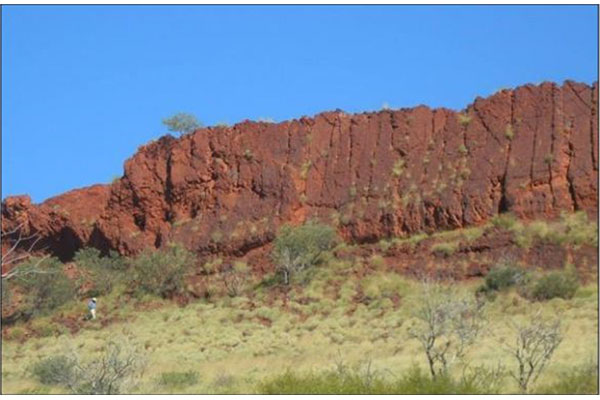Strike significantly bolsters iron ore resource at Paulsens East

Pic: John W Banagan / Stone via Getty Images
Special Report: Just weeks after delivering a maiden high-grade resource for its Paulsens East iron ore project in WA, Strike Resources has now significantly upgraded that resource and bumped it up into the higher confidence indicated category.
The new indicated resource now stands at 9.6 million tonnes at 61.1 per cent iron.
Mineral resources are categorised in order of increasing geological confidence as inferred, indicated or measured.
By moving resources into the indicated category, it means a company has sufficient information on geology and grade continuity to support mine planning.
>> Learn more about Strike Resources
The upgraded resource is the result of data from two extensive drilling campaigns totalling 3,537m drilled across 66 holes, together with extensive rock chip sampling and recently completed precision drone survey, mapping and sampling programs.
“This upgrade on the maiden JORC resource at Paulsens East, where we essentially converted the whole inferred resource into an indicated resource, is a major step forward for the company and is confirmation of the quality of the asset,” managing director William Johnson.
>> Check out the Paulsens East project here
In a great neighbourhood
Paulsens East is located in the extremely iron ore fertile Pilbara region – well known as the home to iron ore heavyweights Rio Tinto, BHP (ASX:BHP) and Fortescue Metals Group (ASX:FMG).
Strike is investigating the potential for an up to a 1-million-tonne-per-annum direct shipping ore (DSO) operation at Paulsens East.
DSO refers to minerals that require only simple crushing before they are exported, which keeps costs low.
A key feature of the Paulsens East resource is an approximately 3km-long ridge of outcropping hematite conglomerate which extends up to 60m above the surrounding terrain.

Thanks to the recently completed program, the estimate of potential DSO material that may be able to be mined with minimal overburden from the outcropping portion of the ridge has increased by 50 per cent — from 2 million tonnes to 3 million tonnes at 61 per cent iron.
This would mean mining could be undertaken relatively simply using shovels and trucks, with the material then to be crushed and screened on site prior to transport by road to a suitable port facility for export.
“From our discussions to date with the various relevant service providers, we remain confident of an economically viable DSO operation at Paulsens East and look forward to keeping the market updated as we tick the boxes required to bring this asset into production,” Johnson said.
Motoring ahead
Strike (ASX: SRK) is making rapid progress with the study and approvals process for a potential DSO mining operation, which will allow it to take advantage of current iron ore prices and generate near-term cashflow.
The company expects to be in a position to provide estimates of likely capital and operating costs for the Paulsens East DSO project with the next four to six weeks.
Strike is also continuing talks with trucking providers, mining contractors, port operators and potential offtake partners.
It is making good progress on locking in sales deals for Paulsens East thanks to its extensive links to the global iron ore industry, in particular through the connections of long time Strike director and industry veteran Malcolm Richmond, who is ex-Rio Tinto (ASX:RIO) and Hamersley Iron.
The company has been able to engage with a number of potential offtake partners for Paulsens East and expects to secure one or more binding offtake agreements over the coming months.
This story was developed in collaboration with Strike Resources, a Stockhead advertiser at the time of publishing.
This story does not constitute financial product advice. You should consider obtaining independent advice before making any financial decisions.
UNLOCK INSIGHTS
Discover the untold stories of emerging ASX stocks.
Daily news and expert analysis, it's free to subscribe.
By proceeding, you confirm you understand that we handle personal information in accordance with our Privacy Policy.








